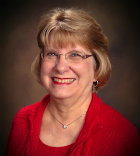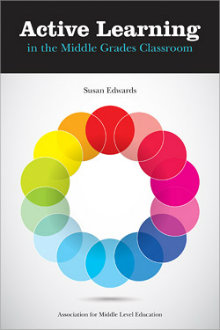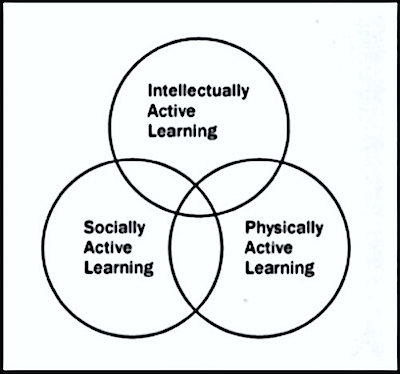Active Learning Ideas for the Middle Grades
Active Learning in the Middle Grades Classroom
By Susan Edwards
(Association for Middle Level Education, 2016 – Learn more)

Anyone who works with middle school students knows that they will speak their minds. That’s what makes the Introduction to Active Learning in the Middle Grades by Susan Edwards so delightful! She shares what middle school students had to say about “what they do and do not like and how they learn best.” (p. xi)

Edwards lays a foundation for those educators who might be hesitant to include more hands-on learning activities in their lessons. Based on research and the recommendations of the Association for Middle Level Education (AMLE), the author offers three reasons for including active learning in daily teaching:
- Young adolescents are at a unique place in their development. (p.16)
- They crave variety. (p.17)
- There is value in the struggle. (p. 18)
Then she explains the Active Learning Framework approach which is a way of thinking about and planning lessons. Each category is supported with research. There is a chapter devoted to each category that includes strategies to actively engage students.
Teachers will find familiar teaching ideas as well as new approaches that are easy to implement. Readers will feel supported and encouraged by the practicality of the strategies the author includes. In the chapter on Socially Active Learning, Edwards suggests that readers leave their “classroom management concerns on the back burner until you have a chance to read Chapter 12.” (p. 64)
I confess! I immediately turned to Chapter 12, Overcoming the “Kids Can’t Handle It” Issue, to see what she had to say. And I was not disappointed. The proven strategies and techniques she offers to maintain a respectful and productive classroom environment will have the students engaged in active, purposeful learning and the teacher still in possession of his/her sanity.
What does Active Learning look like in the classroom?
In Part 3, Edwards shares examples of how teachers incorporate active learning into their content areas: Mathematics, Language Arts, Science, and Social Studies. Bolstered by the charts, graphics, and snippets of conversation she shares, a reader can see how to make learning more meaningful and engaging for his/her students.
My suggestion is to read Active Learning in the Middle Grades Classroom by Susan Edwards from beginning to end to have a solid understanding of the Active Learning Framework. Then select a strategy to implement with your students. Once your students become comfortable with that strategy, add another one. Before you know it, your students will be empowered to become lifelong learners.
AMLE members can view Susan Edwards’ webinar, Active Learning Strategies for Your Middle Grades Classroom.
Former eighth grade teacher Anne Anderson is an educational consultant known for her practical ideas and engaging ELA workshops. Anne’s goal is to help teachers help students. Her positive approach and sense of humor bring encouragement to her audiences. Anne seeks to provide educators with practical solutions to teaching and learning problems. Visit her website and subscribe to her bi-monthly newsletter, Spotlight on Success.


































